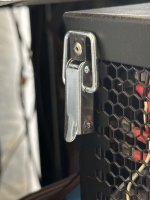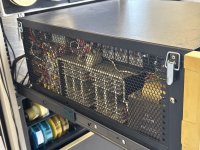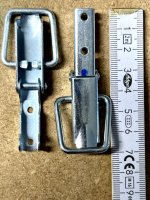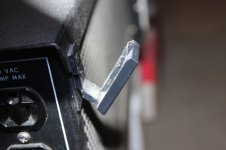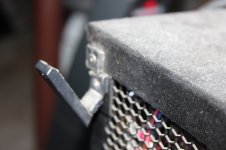// File: ../../../../MAINDEC_software/KK8-E_pdp8e_cpu/MAINDEC-8E-D0AB-PB.bin; Status: CHKSUM: Computed: 1504, input: 1504 -- PASS
//
memory[15'o00000] = 12'o0000; // AND 0 ea=00000
memory[15'o00001] = 12'o5001; // JMP 1 ea=00001
memory[15'o00002] = 12'o0002; // AND 2 ea=00002
memory[15'o00003] = 12'o0003; // AND 3 ea=00003
memory[15'o00004] = 12'o0000; // AND 0 ea=00000
memory[15'o00005] = 12'o0000; // AND 0 ea=00000
memory[15'o00006] = 12'o7402; // HLT
memory[15'o00007] = 12'o7000; // NOP
memory[15'o00010] = 12'o0000; // AND 0 ea=00000
memory[15'o00020] = 12'o0000; // AND 0 ea=00000
memory[15'o00021] = 12'o0001; // AND 1 ea=00001
memory[15'o00022] = 12'o0002; // AND 2 ea=00002
memory[15'o00023] = 12'o0003; // AND 3 ea=00003
memory[15'o00024] = 12'o0004; // AND 4 ea=00004
memory[15'o00025] = 12'o0006; // AND 6 ea=00006
memory[15'o00026] = 12'o0010; // AND 10 ea=00010
memory[15'o00027] = 12'o0014; // AND 14
memory[15'o00030] = 12'o0020; // AND 20 ea=00020
memory[15'o00031] = 12'o0030; // AND 30 ea=00030
memory[15'o00032] = 12'o0040; // AND 40 ea=00040
memory[15'o00033] = 12'o0060; // AND 60 ea=00060
memory[15'o00034] = 12'o0100; // AND 100 ea=00100
memory[15'o00035] = 12'o0140; // AND 140
memory[15'o00036] = 12'o0200; // AND 0 ea=00000
memory[15'o00037] = 12'o0300; // AND 100 ea=00100
memory[15'o00040] = 12'o0400; // AND I 0 ea=00000
memory[15'o00041] = 12'o0600; // AND I 0 ea=00000
memory[15'o00042] = 12'o1000; // TAD 0 ea=00000
memory[15'o00043] = 12'o1234; // TAD 34 ea=00034
memory[15'o00044] = 12'o1400; // TAD I 0 ea=00000
memory[15'o00045] = 12'o2000; // ISZ 0 ea=00000
memory[15'o00046] = 12'o3000; // DCA 0 ea=00000
memory[15'o00047] = 12'o3312; // DCA 112 ea=00112
memory[15'o00050] = 12'o4000; // JMS 0 ea=00000
memory[15'o00051] = 12'o7717; // 7717
memory[15'o00052] = 12'o7776; // SPA SNA SZL CLA OSR HLT
memory[15'o00053] = 12'o7775; // 7775
memory[15'o00054] = 12'o7773; // 7773
memory[15'o00055] = 12'o7767; // 7767
memory[15'o00056] = 12'o7757; // 7757
memory[15'o00057] = 12'o7737; // 7737
memory[15'o00060] = 12'o7177; // CLL CMA CML IAC
memory[15'o00061] = 12'o7677; // 7677
memory[15'o00062] = 12'o7577; // 7577
memory[15'o00063] = 12'o7377; // CLA CLL CMA CML IAC
memory[15'o00064] = 12'o6777; // IOT 77,7
memory[15'o00065] = 12'o5777; // JMP I 177 ea=07410
memory[15'o00066] = 12'o3777; // DCA I 177 ea=07410
memory[15'o00067] = 12'o7777; // 7777
memory[15'o00070] = 12'o5252; // JMP 52 ea=00052
memory[15'o00071] = 12'o2525; // ISZ I 125
memory[15'o00072] = 12'o6000; // IOT 00,0
memory[15'o00073] = 12'o7000; // NOP
memory[15'o00074] = 12'o7400; // 7400
memory[15'o00075] = 12'o7600; // CLA
memory[15'o00076] = 12'o7740; // SMA SZA CLA
memory[15'o00077] = 12'o7760; // SMA SZA SNL CLA
memory[15'o00100] = 12'o7770; // SPA SNA SZL CLA
memory[15'o00101] = 12'o7774; // SPA SNA SZL CLA OSR
memory[15'o00102] = 12'o0007; // AND 7 ea=00007
memory[15'o00103] = 12'o0067; // AND 67 ea=00067
memory[15'o00104] = 12'o0017; // AND 17
memory[15'o00105] = 12'o0037; // AND 37 ea=00037
memory[15'o00106] = 12'o0077; // AND 77 ea=00077
memory[15'o00107] = 12'o0177; // AND 177 ea=00177
memory[15'o00110] = 12'o0377; // AND 177 ea=00177
memory[15'o00111] = 12'o0777; // AND I 177 ea=07410
memory[15'o00112] = 12'o1777; // TAD I 177 ea=07410
memory[15'o00113] = 12'o7700; // SMA CLA
memory[15'o00114] = 12'o5225; // JMP 25 ea=00025
memory[15'o00115] = 12'o2552; // ISZ I 152 ea=07440
memory[15'o00116] = 12'o0770; // AND I 170 ea=07440
memory[15'o00117] = 12'o7007; // IAC RTL
memory[15'o00120] = 12'o0207; // AND 7 ea=00007
memory[15'o00121] = 12'o5140; // JMP 140
memory[15'o00122] = 12'o5140; // JMP 140
memory[15'o00144] = 12'o1067; // TAD 67 ea=00067
memory[15'o00145] = 12'o7200; // CLA
memory[15'o00146] = 12'o7402; // HLT
memory[15'o00147] = 12'o7410; // SKP
memory[15'o00150] = 12'o7402; // HLT
memory[15'o00151] = 12'o7200; // CLA
memory[15'o00152] = 12'o7440; // SZA
memory[15'o00153] = 12'o7402; // HLT
memory[15'o00154] = 12'o7450; // SNA
memory[15'o00155] = 12'o7410; // SKP
memory[15'o00156] = 12'o7402; // HLT
memory[15'o00157] = 12'o7200; // CLA
memory[15'o00160] = 12'o1050; // TAD 50 ea=00050
memory[15'o00161] = 12'o7440; // SZA
memory[15'o00162] = 12'o7410; // SKP
memory[15'o00163] = 12'o7402; // HLT
memory[15'o00164] = 12'o7450; // SNA
memory[15'o00165] = 12'o7402; // HLT
memory[15'o00166] = 12'o7200; // CLA
memory[15'o00167] = 12'o1045; // TAD 45 ea=00045
memory[15'o00170] = 12'o7440; // SZA
memory[15'o00171] = 12'o7410; // SKP
memory[15'o00172] = 12'o7402; // HLT
memory[15'o00173] = 12'o7450; // SNA
memory[15'o00174] = 12'o7402; // HLT
memory[15'o00175] = 12'o7000; // NOP
memory[15'o00176] = 12'o7000; // NOP
memory[15'o00177] = 12'o7410; // SKP
memory[15'o00200] = 12'o5144; // JMP 144 ea=00144
memory[15'o00201] = 12'o7200; // CLA
memory[15'o00202] = 12'o1042; // TAD 42 ea=00042
memory[15'o00203] = 12'o7440; // SZA
etc
